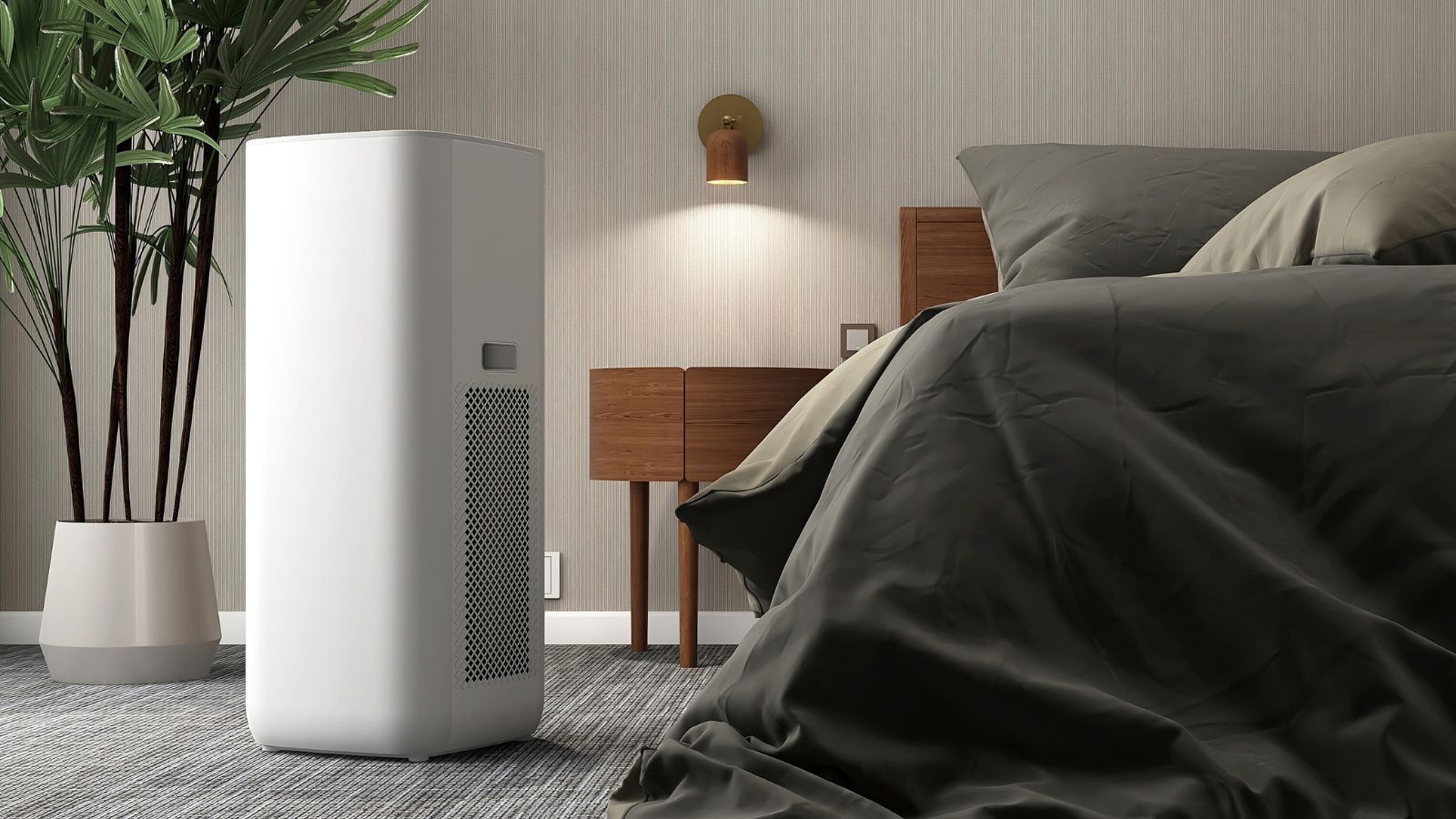Renewables: A Beginner's Guide to Sustainable Energy Sources
With interest in renewables currently at a high, energy expert David Hilton looks at the pros and cons of the different types available for powering your home
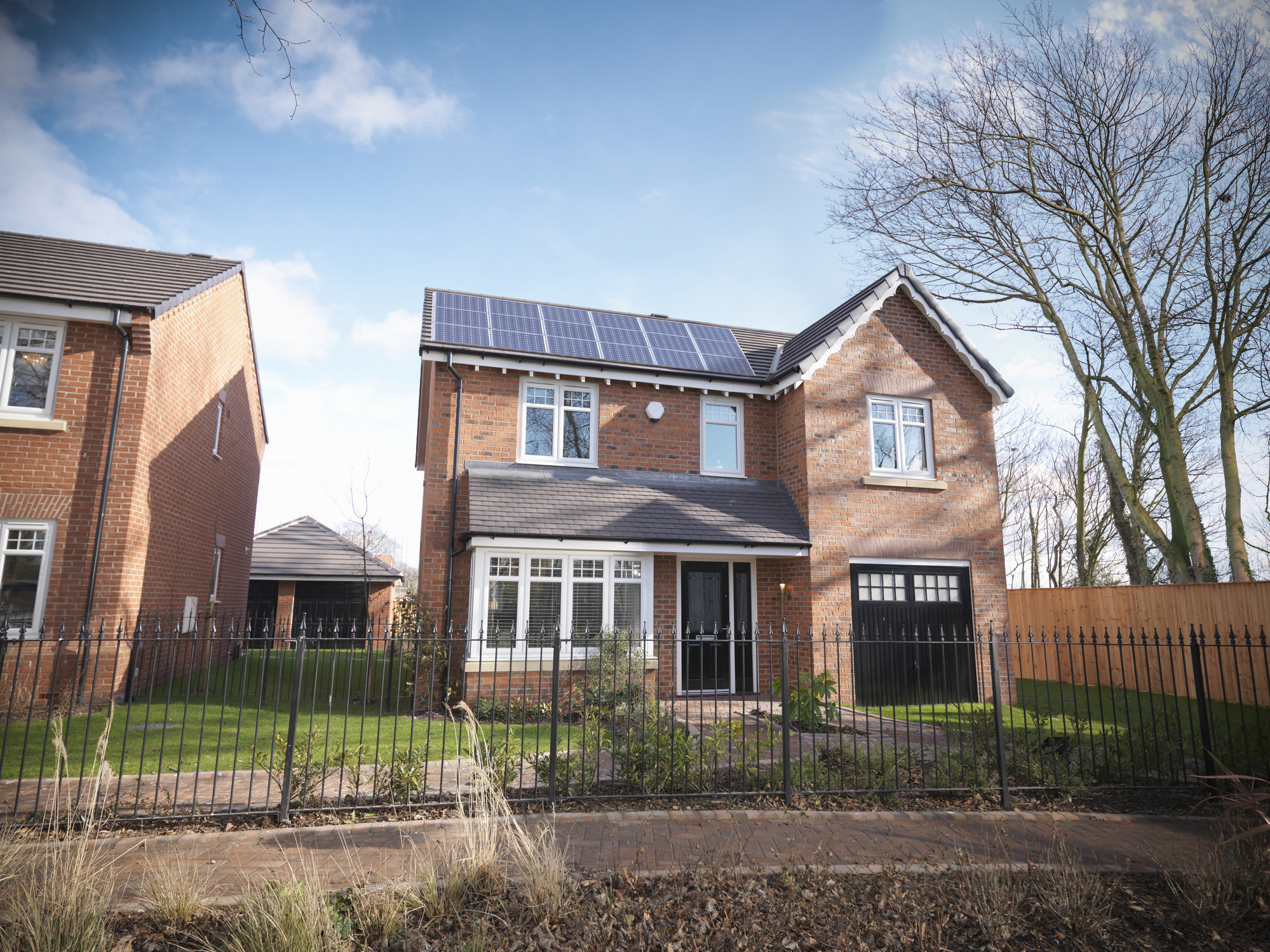
Renewables remain high on the agenda for many self builders, as they look to incorporate sustainability into the fabric of the design of their new homes.
While often the initial expenditure on renewable energy sources for the home is high, the rewards often stretch far beyond - not only reducing your home’s need for heat and energy sources powered by polluting fossil fuels, but also offering lower bills, alongside the potential of grants to offset and reimburse your expenses.
While some providers will offer you energy from renewable sources, in our expert guide, we look at the technology available for generating your own energy sustainably to contribute to your home’s energy mix, or to power it completely.
From costs to planning to suitability, here’s what you need to know.
Solar
Solar PV
Solar PV systems convert sunlight directly into energy. Solar PV is the most common form of renewable energy system.
Their popularity surged during the generous Feed In Tariff (FiT) scheme, however, with the installation costs rapidly falling, and when you plan your lifestyle and energy consumption to maximise the use of the generated electricity, solar PV panels are still a good option.
(MORE: Solar PV Guide)
Bring your dream home to life with expert advice, how to guides and design inspiration. Sign up for our newsletter and get two free tickets to a Homebuilding & Renovating Show near you.
A system of around 4kW generation capacity (under optimum sunshine) is the most common, as installers can install and self-certify an array of this size without special permission from the distribution network operator.
The unit cost reduces with the increasing size of the system. This is because the cost of the other elements – inverter, control gear, scaffolding and so on – remains largely the same. This makes schemes below 2kW difficult to justify in financial terms.
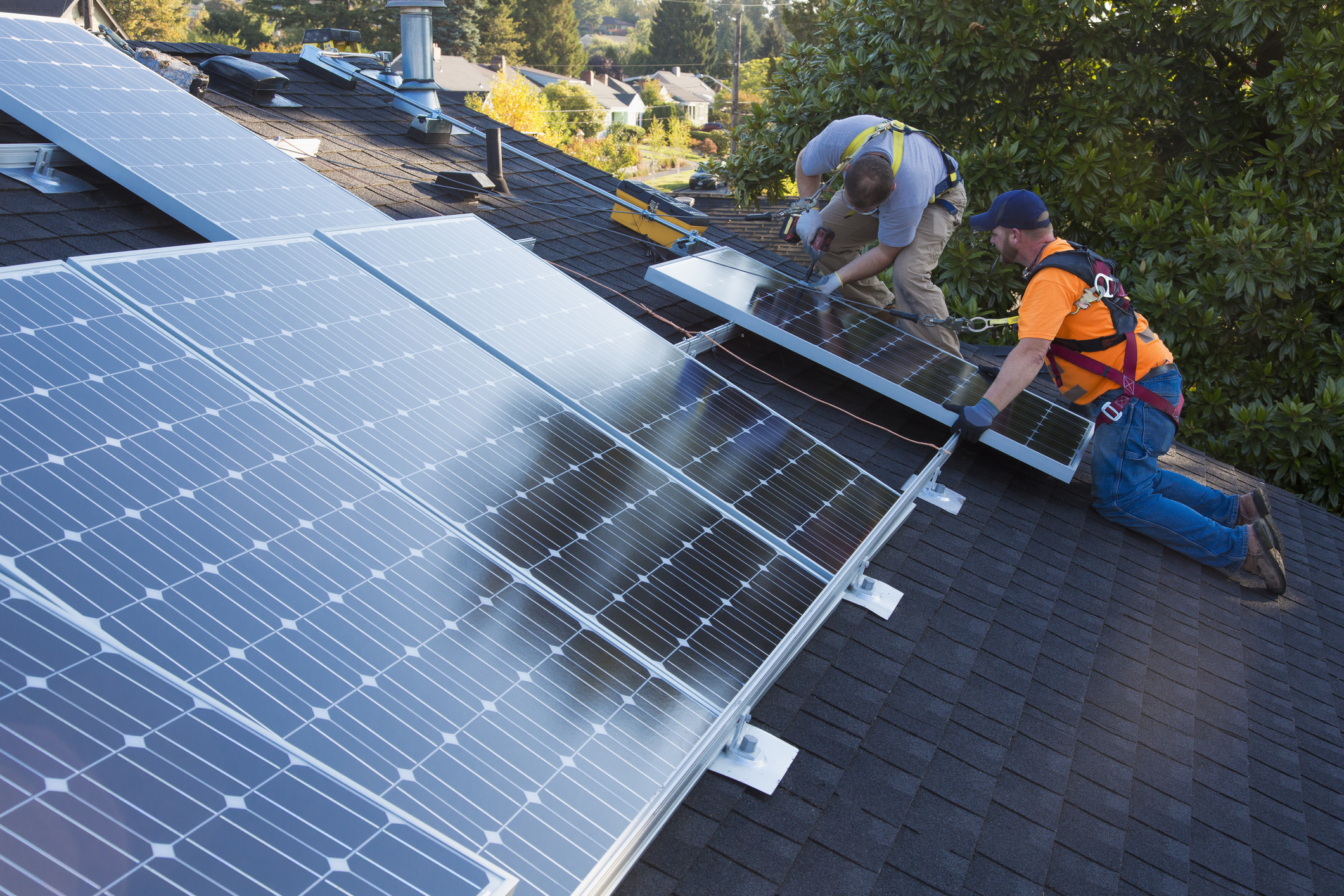
Benefits of Solar PV
- Solar PV will suit a higher proportion of properties than other renewable technologies and has a long and largely maintenance-free life
- The technology is easily available
- Generation is silent
- PV systems are fairly low-maintenance products. Many inverters now have apps that monitor the generation and will quickly flag up any irregularities
Drawbacks of Solar PV
- Efficiency levels are relatively low compared with other renewable energy systems
- Weather dependent
- PV will not give you all of the energy you require in your home without solar batteries.
Installation
A solar array does not need to be mounted on the roof but it needs to be as close to south-facing as possible (within 45°) and inclined as close to 30° as possible.
The array needs to be free from shadows (including those cast by trees and neighbouring houses) and not likely to be hit by hard objects (ie. errant cricket balls).
Planning permission is not usually needed to install solar PV panels, but it is wise to check.
When choosing a company to supply and install, obtain references (and follow them up) to make sure the company has a good track record.
Cost
A typical 4kWp solar PV system will cost between £5,500 and £9,000 for an on-roof system. Systems integrated into the roof tiles will cost from £9,000 upwards.
Allow an additional £600-£1,000 to replace the inverter unit after 10+ years.
(MORE: Get a quote for solar panels for your project)
Grants
Since the end of the FiT, there have been no specific national grants or incentives available for the installation of solar PV panels.
However, energy companies will now enter into an agreement to buy your surplus generation from you. The price you'll be offered will depend on the supplier, but it is less generous than the rates offered under the FiT.
The payback period for a PV system at current electricity prices is usually around £500-£600 per year.
You could therefore expect the £6,000 system to be paid back in 10-12 years, leaving you with 8-10 years of free energy with profit.
Solar Thermal
Solar thermal systems use the heat from the sun to heat your hot water. Solar thermal systems are robust, simple, effective, have a long life and are relatively cheap to install.
(MORE: Solar Thermal Guide)
There are two types:
- Flat plate systems are cheaper to install and evacuated tube systems are slightly more efficient. If the roof is close to due south then flat plate will be as good, and cheaper, than evacuated tube.
- Solar evacuated tubes are very useful for difficult installations. An evacuated tube system can be installed by a single fitter as there is no heavy lifting involved.
Benefits of Solar Thermal Panels
- They take up less space on the roof than solar PV panels
- There are virtually no/minimal running costs
- Simple, reliable technology which can lower your energy bills.
Drawbacks of Solar Thermal Panels
- In most cases the solar thermal system does not contribute to the central heating, as there is less solar resource during the heating season and so it would not be of much benefit. It is largely only used for domestic hot water preparation.
- The payback period can be some 20 or so years, depending on your existing fuel source and hot water use.
- Solar thermal systems don’t work with most combi boilers, as they need a large hot water storage tank to store the energy produced.

Installation
Solar thermal can typically be installed under Permitted Development (i.e. without planning) except in sensitive areas, such as Conservation Areas or on listed buildings.
Cost
A two or three panel solar thermal system will cost around £4,000 to £7,000 installed. This would supply an average 200 to 300 litre cylinder.
Grants
Solar thermal qualifies for Renewable Heat Incentive (RHI), but to qualify it can only be used for domestic hot water needs.
It also qualifies for funding from the Green Homes Grant, under which the government will pay at least two-thirds of the cost of installing a solar thermal system, up to £5,000.
Hybrid Solar Panels
Photovoltaic thermal (PVT) is the best of the combined technologies. PVT looks like a standard PV array but produces high quantities of hot water as well as electricity.
Extracting the heat makes the PV element more efficient, increasing electricity production. When combined with a heat pump it gives good year-round performance.
(MORE: Hybrid Solar Panels Guide)
Benefits of Hybrid Solar Panels
- Take up less roof space as PV and thermal panels are combined
- Optimises PV panels
Drawbacks of Hybrid Solar Panels
- Thermal element won't reach same temperatures as separate solar thermal panels
- More expensive to install as requires specialist installers
- Home will still require a primary heating source
Installation
As with PV, the array needs to be as close to south facing as possible, inclined as close to 30° as possible (the array does not need to be mounted on the roof) and free from shadows.
Cost
Expect to pay around 1.5 to 2 times the cost of an equivalent rated solar PV system. A 4kWp system will cost around £10,000 installed.
Grants
PVT is no longer eligible for FiT or RHI payments. PVT is for people who want to invest in minimising long-term running costs by producing as much energy as possible on site, at the lowest possible unit cost. What this needs, above all, is a specialist installer with the appropriate expertise.
Biomass
Biomass heating is the combustion of grown products, normally wood based such as wood pellets, logs and chips. Pellets are clean, easy and expensive. Logs are cheap, but more messy and more work. Woodchip is generally for large 50kW+ boilers; again messy and it needs a lot of space.
(MORE: Biomass Boiler Guide)
Both pellet and log machines are available as boilers or stoves with back boilers. The main difference is that pellet stoves/boilers work as a principal heat source but log stoves/boilers don’t.
This is because pellets have a standard calorific value and are fed in a slow continuous trickle to the burner, which means that a given level of heat output can be maintained. Logs are thrown into the stove willy-nilly and heat output will vary with the quality of the logs and the amount of wood in the stove.
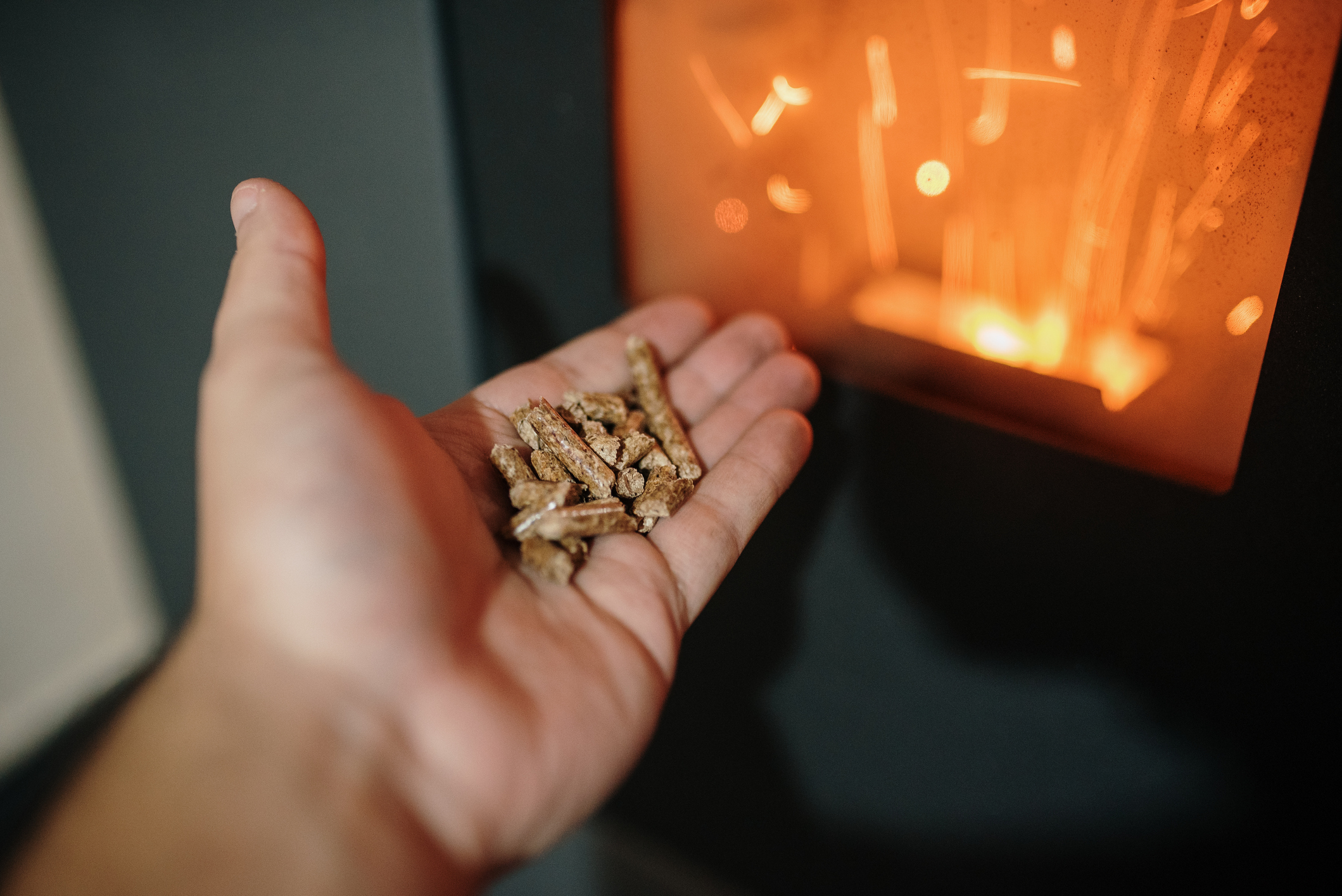
A gasifying log batch boiler works well as a principal heat source for houses that need a reasonably high level of heat, but they do require logs to be loaded manually. Wood pellet boilers are far more automated but the equipment is more expensive, as is the fuel.
Biomass makes more sense in larger homes with a higher heat demand, where RHI payments can offset the capital cost of buying and installing the boiler.
Benefits of Biomass Boilers
- Efficiency is generally up to 90% and biomass boilers tend to have a long life of 20-plus years.
- Wood-based biomass is considered and measured a carbon-neutral fuel.
Drawbacks of Biomass Boilers
- Biomass boilers are generally much larger than conventional boilers, so you will need plenty of space to house them, along with a store for pellets, logs or chips. For example, a one tonne palette of bagged pellets will take up roughly the same floor areas as the boiler.
- Each machine does have very individual requirements, but wood biomass boilers will need ash removal at regular intervals, from monthly for log boilers to twice a year for pellet boilers.
Installation
Look for an installer that is HETAS registered. They should have familiarity with equipment from more than one manufacturer, and be able to work within the budget range for your choice of equipment.
Cost
Cost varies with the type of boiler, the sophistication of the technology, size and quality.
Fully automated wood pellet boilers installed using a typical weekly hand feed option will cost between £11,000 and £15,000, while a fully installed automated system with pellet hopper and delivery fuel system would likely cost between £20,000 and £25,000.
(MORE: Get a quote for a boiler for your project)
Grants
Biomass boilers qualify for the RHI, the government scheme whereby those with renewable heating technologies are paid back for the heat they generate. Wood pellet fuelled stoves and stove-boilers also qualify.
Biomass boilers also qualify as a primary measure in the Green Homes Grant, with grants up to £5,000 (or £10,000 for some low income houses) to spend on installation of a biomass system.
Heat Pumps
Air Source Heat Pumps
Effectively a fridge in reverse, an air source heat pump takes in air from the outside and releases it at a higher temperature. The unit looks similar to an external air conditioning kit.
The unit physically replaces the boiler, but as it delivers lower temperatures than a boiler, it needs to be carefully designed into well-insulated, airtight homes for optimum efficiency.
The heat pump use an efficiency measurement known as the Seasonal Performance Factor (SPF). This indicates performance over a whole heating season, within set parameters. Ofgem uses a Seasonal COP or SCOP, but the calculation is the same.
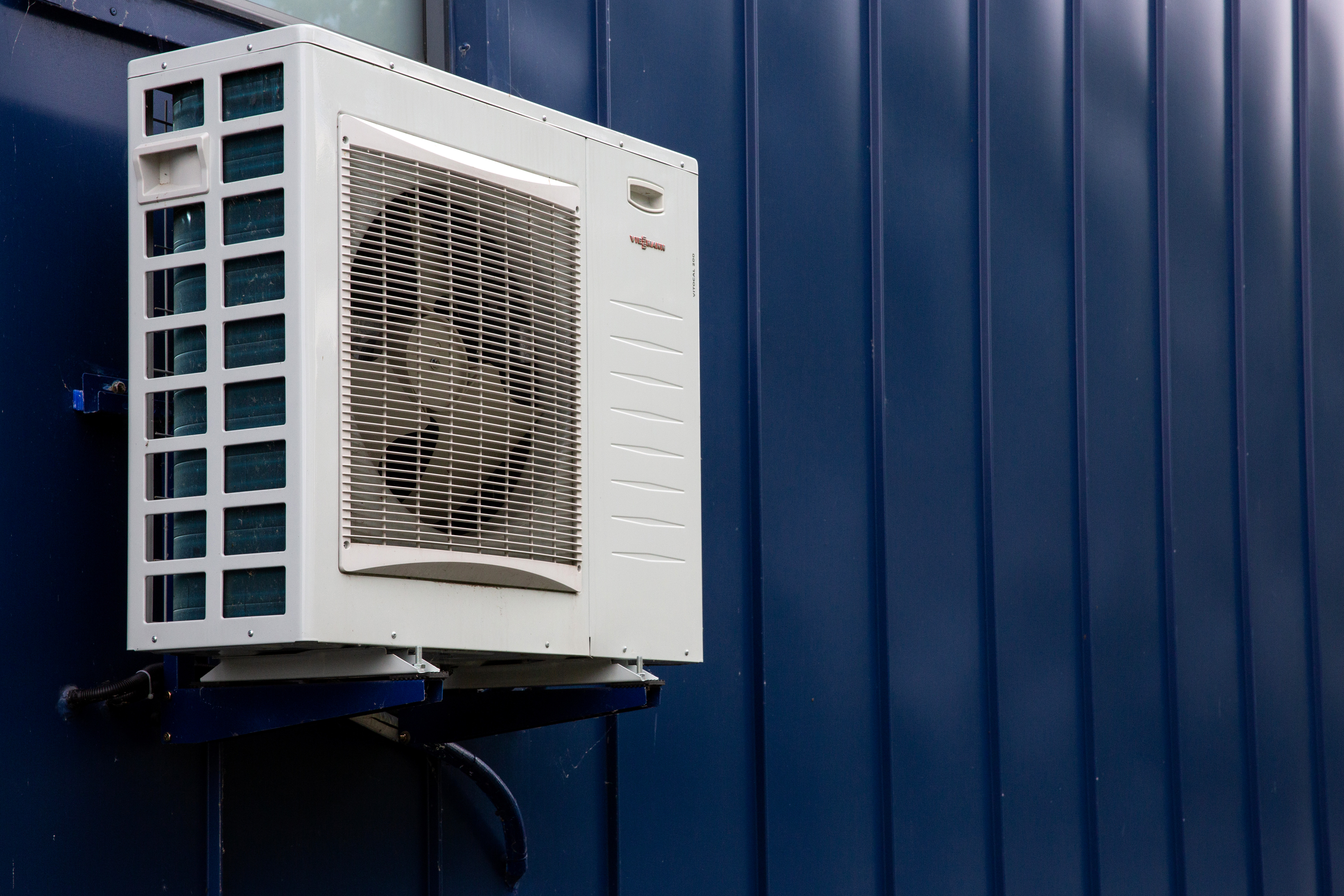
An advertised SPF will be based on a flow temperature of perhaps 35°C. This is suitable for underfloor heating but not radiators or domestic hot water. If the heat pump is used for anything other than underfloor heating, the SPF will fall.
The SPF is also affected by the outside air temperature, so it’s lower in winter when the most heat is needed. There is evidence that some air source heat pumps, used on their own, emit more CO2 and cost more to run than an equivalent gas boiler.
Benefits of Air Source Heat Pumps
- Comparatively low running costs.
Drawbacks of Air Source Heat Pumps
- You need a well-insulated, relatively airtight house before installing an air source heat pump which may incur extra expense.
- Electricity is still needed to power an air source heat pump.
- Efficiency drops when temperatures fall outside.
Installation
Air source heat pumps will need to be installed by a professional. Seek out supply and fit contracts for a smoother installation process.
There are a number of factors which can affect efficiency, and if commissioned incorrectly, air source heat pumps could use excess electricity unnecessarily.
Installing an air source heat pump largely falls under Permitted Development, but there are some limits you'll need to adhere to, including distance from the property boundary and some exceptions on installing the external unit on a roof.
Cost
The cost to supply and install an air source heat pump starts from £11,000. The cost to install in a self build will be lower than in an existing property, where allowances to upgrade the building's fabric and potentially replace existing radiators could see costs of up to £27,000.
(MORE: Air Source Heat Pump Costs Explained)
Grants
Air source heat pumps qualify as a primary measure to receive funding from the Green Homes Grant. They also are eligible for RHI payments.
Ground Source Heat Pumps
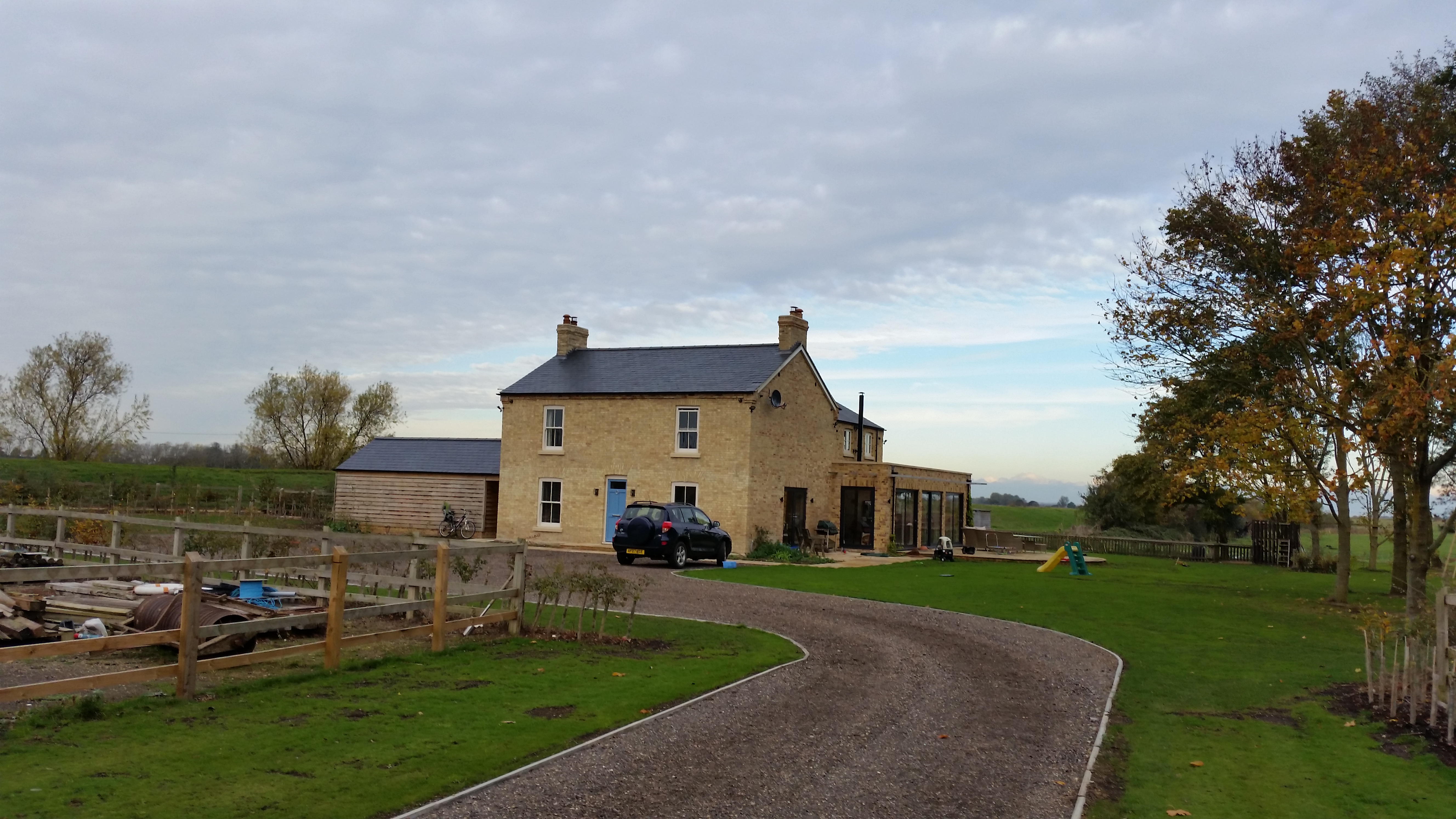
Underground pipes take solar energy from the ground and convert it into heat. Ground source heat pumps extract latent heat from buried ground collectors, such as trenches or more expensive boreholes.
(MORE: Ground Source Heat Pump Guide)
Make sure that your ground source heat pump is sized correctly, and that the house is designed with such a pump in mind. You may want to get advice from an energy consultant.
Benefits of a Ground Source Heat Pump
- Running cost is likely to be around 45% lower than for a gas boiler.
- Long life-span
Drawbacks of a Ground Source Heat Pump
- Again, you'll need a well-insulated, airtight house for a ground source heat pump to be effective, so you may need to invest in improvements to the fabric of your home.
- You also need a reasonably large garden or plot of land for the buried ground collectors, such as slinkies or boreholes.
- There will be significant disturbance to the garden to install a horizontal or vertical ground array.
Installation
Holes are dug to house the ground array, requiring either expensive equipment for vertical boreholes, or a large expanse of land in the case of horizontal arrays.
Ground source heat pumps are expensive to install, with the cost of installation around £1,500-£2,000 per kilowatt.
There is nothing externally visible, so it is usually covered in Permitted Development meaning you shouldn't be required to seek planning permission.
Cost
While the ground source heat pump itself can cost anywhere between £2,000 - £15,000, installation, as already explained, can be expensive. Overall, you should budget between £15,000 to £25,000 for complete ground source heat pump installation for a 240m2 home.
(MORE: Ground Source Heat Pump Costs Explained)
Grants
MCS registered ground source heat pump installations are potentially eligible for RHI payments for seven years. Ground source heat pumps are a primary measure under the Green Homes Grant also, eligible for £5,000 or £10,000 vouchers to offset the initial expenditure.
Wind Turbines

Wind turbines convert the wind’s kinetic energy into mechanical energy. While less popular than other renewable options, a small 1kW-2kW wind turbine may still be a viable option for some self builders. That solution might be improved by adding battery storage to the system, like the Sunamp or Tesla system.
However, the economic case for installing a 5kW or 10kW domestic scale wind turbine (based on installation costs and current tariffs) no longer stacks up.
Benefits of Wind Turbines
- Wind is a renewable energy source with no ongoing fuel costs.
Drawbacks of Wind Turbines
- Wind speed and lack of turbulence are key. Generally the annual average wind speed needs to be over 5 metres per second (m/s)
- The turbine needs to be sited away from buildings, trees and so on
- It must not cause ‘offence’ to neighbours (typically noise offence), listed buildings or national parks
- In some areas a bird or bat survey may be needed, or an environmental impact assessment. Check the requirements with the local authority and get prices before committing.
- Wind turbines are complicated bits of kit with many mechanical components, which will fail. Look for those with comprehensive warranties.
Installation
Wind turbines will need planning permission. Neighbours are likely to object, meaning the process can be expensive and time-consuming. You planning application will need to cover the likes of noise surveys, visual impact and also ecological studies.
Cost
A 5kW wind turbine would be usual for a domestic installation and will cost around £20,000-£25,000. After installation, with the work done to prep the site and get planning consent, the overall cost is likely to be around £30,000 to £40,000.
Smaller 1kW and 2kW turbines costs from £2,000 - £4,000.
Grants
Wind turbines used to attract competitive rates through the FiT scheme, however this came to an end in March 2019.
Micro Hydro Power
Micro hydro technology is available that allows a homeowner (with a stream) to generate their own power. A hydro turbine of just 500W will produce enough electricity through the year to meet the annual consumption of an energy-efficient home. You could pick up and carry a turbine that size with one hand.
What’s more, pound for pound, it’s the most efficient of all the renewable technologies. A total life in excess of 40 or 50 years, with little annual cost, is not unreasonable.
You will need a stream or river nearby that is large enough, measured by ‘head’ – the vertical distance between the highest and lowest points of the stream and ‘flow’, which is the amount of water passing a point, measured in litres per second
Benefits of Micro Hydro Power
- Largely consistent elecriticty generation compared to wind and solar power.
Drawbacks of Micro Hydro Power
- Low head schemes (under 5m head) are less productive and more expensive than medium to high head schemes, and are often uneconomic.
Cost
Each scheme is specific to the stream and the price can vary hugely. According to CAT, the cost of a 1kW off-grid battery charging system ranges from £5,000 to £6,000.
You may be able to pull together a micro hydro power set-up for under £10,000, but these costs may be up to £25,000.
Grants
Micro hydro power installations in Great Britain are eligible for Smart Export Guarantee (SEG) payments. SEG is an obligation for licensed electricity suppliers to offer a tariff and make payment to small-scale low-carbon generators for electricity exported to the National Grid set by the government.
Tips For all Renewable Systems
- Start by making your self build or extension as energy efficient as possible at the design stage.
- Check that you understand the renewable energy system and get advice from your chosen supplier about the best size and specification for your property.
- Select an installer who is certified under the Microgeneration Certification System (MCS) and uses MSC-certified products.
- Check the latest government-funded financial incentives as they change regularly.
- Unless your home is off-grid, the costs of storing energy outweigh the financial benefits, but the technology is changing rapidly.
David is a renewables and ventilation installer, with over 35 years experience, and is a long-standing contributor to Homebuilding and Renovating magazine. He is a member of the Gas Safe Register, has a Masters degree in Sustainable Architecture, and is an authority in sustainable building and energy efficiency, with extensive knowledge in building fabrics, heat recovery ventilation, renewables, and also conventional heating systems. He is also a speaker at the Homebuilding & Renovating Show.
Passionate about healthy, efficient homes, he is director of Heat and Energy Ltd. He works with architects, builders, self builders and renovators, and designs and project manages the installation of ventilation and heating systems to achieve the most energy efficient and cost effective outcome for every home.

